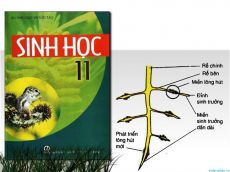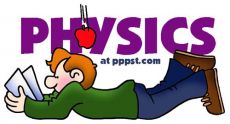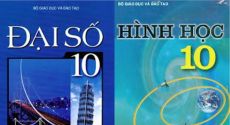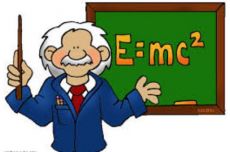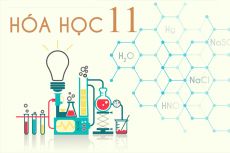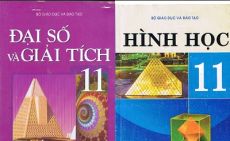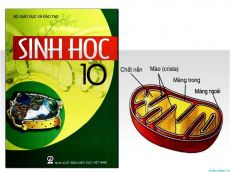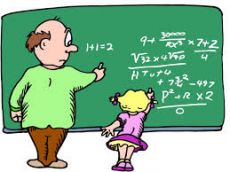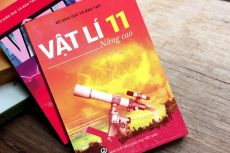Trắc nghiệm Reading Unit 14 lớp 12 Tiếng Anh Lớp 12
-
Câu 1:
Read the following passage and mark the letter A, B, C, or D on your answer sheet to indicate the correct answer to each of the questions.
Smallpox was the first widespread disease to be eliminated by human intervention. Known as a highly contagious viral disease, it broke out in Europe, causing the deaths of millions of people until the vaccination was invented by Edward Jenner around 1800. In many nations, it was a terror, a fatal disease until very recently. Its victims suffer high fever, vomiting and painful, itchy, pustules that left scars. In villages and cities all over the world, people were worried about suffering smallpox.In May, 1966, the World Health Organization (WHO), an agency of the United Nations was authorized to initiate a global campaign to eradicate smallpox. The goal was to eliminate the disease in one decade. At the time, the disease posed a serious threat to people in more than thirty nations. Because similar projects for malaria and yellow fever had failed, few believed that smallpox could actually be eradicated but eleven years after the initial organization of the campaign, no cases were reported in the field.The strategy was not only to provide mass vaccinations but also to isolate patients with active smallpox in order to contain the spread of the disease and to break the chain of human transmission. Rewards for reporting smallpox assisted in motivating the public to aid health workers. One by one, each small-pox victim was sought out, removed from contact with others and treated. At the same time, the entire village where the victim had lived was vaccinated.By April of 1978 WHO officials announced that they had isolated the last known case of the disease but health workers continued to search for new cases for additional years to be completely sure. In May, 1980, a formal statement was made to the global community. Today smallpox is no longer a threat to humanity. Routine vaccinations have been stopped worldwide.
It can be inferred from the passage that ___________.
A. yellow fever have been reported this year.
B. no new cases of smallpox have been reported this year.
C. smallpox victims no longer die when they contact the disease.
D. smallpox is not transmitted from one person to another.
-
Câu 2:
Read the following passage and mark the letter A, B, C, or D on your answer sheet to indicate the correct answer to each of the questions.
Smallpox was the first widespread disease to be eliminated by human intervention. Known as a highly contagious viral disease, it broke out in Europe, causing the deaths of millions of people until the vaccination was invented by Edward Jenner around 1800. In many nations, it was a terror, a fatal disease until very recently. Its victims suffer high fever, vomiting and painful, itchy, pustules that left scars. In villages and cities all over the world, people were worried about suffering smallpox.In May, 1966, the World Health Organization (WHO), an agency of the United Nations was authorized to initiate a global campaign to eradicate smallpox. The goal was to eliminate the disease in one decade. At the time, the disease posed a serious threat to people in more than thirty nations. Because similar projects for malaria and yellow fever had failed, few believed that smallpox could actually be eradicated but eleven years after the initial organization of the campaign, no cases were reported in the field.The strategy was not only to provide mass vaccinations but also to isolate patients with active smallpox in order to contain the spread of the disease and to break the chain of human transmission. Rewards for reporting smallpox assisted in motivating the public to aid health workers. One by one, each small-pox victim was sought out, removed from contact with others and treated. At the same time, the entire village where the victim had lived was vaccinated.By April of 1978 WHO officials announced that they had isolated the last known case of the disease but health workers continued to search for new cases for additional years to be completely sure. In May, 1980, a formal statement was made to the global community. Today smallpox is no longer a threat to humanity. Routine vaccinations have been stopped worldwide.
Which one of the statements doesn’t refer to smallpox?
A. Previous project had failed.
B. People are no longer vaccinated for it.
C. The WHO set up a worldwide campaign to eradicate the disease.
D. It was a fatal threat.
-
Câu 3:
Read the following passage and mark the letter A, B, C, or D on your answer sheet to indicate the correct answer to each of the questions.
Smallpox was the first widespread disease to be eliminated by human intervention. Known as a highly contagious viral disease, it broke out in Europe, causing the deaths of millions of people until the vaccination was invented by Edward Jenner around 1800. In many nations, it was a terror, a fatal disease until very recently. Its victims suffer high fever, vomiting and painful, itchy, pustules that left scars. In villages and cities all over the world, people were worried about suffering smallpox.In May, 1966, the World Health Organization (WHO), an agency of the United Nations was authorized to initiate a global campaign to eradicate smallpox. The goal was to eliminate the disease in one decade. At the time, the disease posed a serious threat to people in more than thirty nations. Because similar projects for malaria and yellow fever had failed, few believed that smallpox could actually be eradicated but eleven years after the initial organization of the campaign, no cases were reported in the field.The strategy was not only to provide mass vaccinations but also to isolate patients with active smallpox in order to contain the spread of the disease and to break the chain of human transmission. Rewards for reporting smallpox assisted in motivating the public to aid health workers. One by one, each small-pox victim was sought out, removed from contact with others and treated. At the same time, the entire village where the victim had lived was vaccinated.By April of 1978 WHO officials announced that they had isolated the last known case of the disease but health workers continued to search for new cases for additional years to be completely sure. In May, 1980, a formal statement was made to the global community. Today smallpox is no longer a threat to humanity. Routine vaccinations have been stopped worldwide.
How was the public motivated to help the health workers?
A. By educating them.
B. By rewarding them for reporting smallpox cases.
C. By isolating them from others.
D. By giving them vaccinations.
-
Câu 4:
Read the following passage and mark the letter A, B, C, or D on your answer sheet to indicate the correct answer to each of the questions.
Smallpox was the first widespread disease to be eliminated by human intervention. Known as a highly contagious viral disease, it broke out in Europe, causing the deaths of millions of people until the vaccination was invented by Edward Jenner around 1800. In many nations, it was a terror, a fatal disease until very recently. Its victims suffer high fever, vomiting and painful, itchy, pustules that left scars. In villages and cities all over the world, people were worried about suffering smallpox.In May, 1966, the World Health Organization (WHO), an agency of the United Nations was authorized to initiate a global campaign to eradicate smallpox. The goal was to eliminate the disease in one decade. At the time, the disease posed a serious threat to people in more than thirty nations. Because similar projects for malaria and yellow fever had failed, few believed that smallpox could actually be eradicated but eleven years after the initial organization of the campaign, no cases were reported in the field.The strategy was not only to provide mass vaccinations but also to isolate patients with active smallpox in order to contain the spread of the disease and to break the chain of human transmission. Rewards for reporting smallpox assisted in motivating the public to aid health workers. One by one, each small-pox victim was sought out, removed from contact with others and treated. At the same time, the entire village where the victim had lived was vaccinated.By April of 1978 WHO officials announced that they had isolated the last known case of the disease but health workers continued to search for new cases for additional years to be completely sure. In May, 1980, a formal statement was made to the global community. Today smallpox is no longer a threat to humanity. Routine vaccinations have been stopped worldwide.
According to the passage, what way was used to eliminate the spread of smallpox?
A. Vaccination of entire villages
B. Treatment of individual victims
C. Isolation of victims and mass vaccinations
D. Extensive reporting of outbreaks
-
Câu 5:
Read the following passage and mark the letter A, B, C, or D on your answer sheet to indicate the correct answer to each of the questions.
Smallpox was the first widespread disease to be eliminated by human intervention. Known as a highly contagious viral disease, it broke out in Europe, causing the deaths of millions of people until the vaccination was invented by Edward Jenner around 1800. In many nations, it was a terror, a fatal disease until very recently. Its victims suffer high fever, vomiting and painful, itchy, pustules that left scars. In villages and cities all over the world, people were worried about suffering smallpox.In May, 1966, the World Health Organization (WHO), an agency of the United Nations was authorized to initiate a global campaign to eradicate smallpox. The goal was to eliminate the disease in one decade. At the time, the disease posed a serious threat to people in more than thirty nations. Because similar projects for malaria and yellow fever had failed, few believed that smallpox could actually be eradicated but eleven years after the initial organization of the campaign, no cases were reported in the field.The strategy was not only to provide mass vaccinations but also to isolate patients with active smallpox in order to contain the spread of the disease and to break the chain of human transmission. Rewards for reporting smallpox assisted in motivating the public to aid health workers. One by one, each small-pox victim was sought out, removed from contact with others and treated. At the same time, the entire village where the victim had lived was vaccinated.By April of 1978 WHO officials announced that they had isolated the last known case of the disease but health workers continued to search for new cases for additional years to be completely sure. In May, 1980, a formal statement was made to the global community. Today smallpox is no longer a threat to humanity. Routine vaccinations have been stopped worldwide.
The word “threat” in paragraph 2 could best be replaced by ___________.
A. risk
B. debate
C. announce
D. bother
-
Câu 6:
Read the following passage and mark the letter A, B, C, or D on your answer sheet to indicate the correct answer to each of the questions.
Smallpox was the first widespread disease to be eliminated by human intervention. Known as a highly contagious viral disease, it broke out in Europe, causing the deaths of millions of people until the vaccination was invented by Edward Jenner around 1800. In many nations, it was a terror, a fatal disease until very recently. Its victims suffer high fever, vomiting and painful, itchy, pustules that left scars. In villages and cities all over the world, people were worried about suffering smallpox.In May, 1966, the World Health Organization (WHO), an agency of the United Nations was authorized to initiate a global campaign to eradicate smallpox. The goal was to eliminate the disease in one decade. At the time, the disease posed a serious threat to people in more than thirty nations. Because similar projects for malaria and yellow fever had failed, few believed that smallpox could actually be eradicated but eleven years after the initial organization of the campaign, no cases were reported in the field.The strategy was not only to provide mass vaccinations but also to isolate patients with active smallpox in order to contain the spread of the disease and to break the chain of human transmission. Rewards for reporting smallpox assisted in motivating the public to aid health workers. One by one, each small-pox victim was sought out, removed from contact with others and treated. At the same time, the entire village where the victim had lived was vaccinated.By April of 1978 WHO officials announced that they had isolated the last known case of the disease but health workers continued to search for new cases for additional years to be completely sure. In May, 1980, a formal statement was made to the global community. Today smallpox is no longer a threat to humanity. Routine vaccinations have been stopped worldwide.
The global community considered the smallpox ___________.
A. a minor illness
B. a deadly illness
C. a mental illness
D. a rare illness
-
Câu 7:
Read the following passage and mark the letter A, B, C, or D on your answer sheet to indicate the correct answer to each of the questions.
Smallpox was the first widespread disease to be eliminated by human intervention. Known as a highly contagious viral disease, it broke out in Europe, causing the deaths of millions of people until the vaccination was invented by Edward Jenner around 1800. In many nations, it was a terror, a fatal disease until very recently. Its victims suffer high fever, vomiting and painful, itchy, pustules that left scars. In villages and cities all over the world, people were worried about suffering smallpox.In May, 1966, the World Health Organization (WHO), an agency of the United Nations was authorized to initiate a global campaign to eradicate smallpox. The goal was to eliminate the disease in one decade. At the time, the disease posed a serious threat to people in more than thirty nations. Because similar projects for malaria and yellow fever had failed, few believed that smallpox could actually be eradicated but eleven years after the initial organization of the campaign, no cases were reported in the field.The strategy was not only to provide mass vaccinations but also to isolate patients with active smallpox in order to contain the spread of the disease and to break the chain of human transmission. Rewards for reporting smallpox assisted in motivating the public to aid health workers. One by one, each small-pox victim was sought out, removed from contact with others and treated. At the same time, the entire village where the victim had lived was vaccinated.By April of 1978 WHO officials announced that they had isolated the last known case of the disease but health workers continued to search for new cases for additional years to be completely sure. In May, 1980, a formal statement was made to the global community. Today smallpox is no longer a threat to humanity. Routine vaccinations have been stopped worldwide.
The word “contagious” is closest in meaning to ___________.
A. courteous
B. arresting
C. numerous
D. catching
-
Câu 8:
Read the following passage and mark the letter A, B, C, or D on your answer sheet to indicate the correct answer to each of the questions.
Smallpox was the first widespread disease to be eliminated by human intervention. Known as a highly contagious viral disease, it broke out in Europe, causing the deaths of millions of people until the vaccination was invented by Edward Jenner around 1800. In many nations, it was a terror, a fatal disease until very recently. Its victims suffer high fever, vomiting and painful, itchy, pustules that left scars. In villages and cities all over the world, people were worried about suffering smallpox.In May, 1966, the World Health Organization (WHO), an agency of the United Nations was authorized to initiate a global campaign to eradicate smallpox. The goal was to eliminate the disease in one decade. At the time, the disease posed a serious threat to people in more than thirty nations. Because similar projects for malaria and yellow fever had failed, few believed that smallpox could actually be eradicated but eleven years after the initial organization of the campaign, no cases were reported in the field.The strategy was not only to provide mass vaccinations but also to isolate patients with active smallpox in order to contain the spread of the disease and to break the chain of human transmission. Rewards for reporting smallpox assisted in motivating the public to aid health workers. One by one, each small-pox victim was sought out, removed from contact with others and treated. At the same time, the entire village where the victim had lived was vaccinated.By April of 1978 WHO officials announced that they had isolated the last known case of the disease but health workers continued to search for new cases for additional years to be completely sure. In May, 1980, a formal statement was made to the global community. Today smallpox is no longer a threat to humanity. Routine vaccinations have been stopped worldwide.
Which of the following is the best title for the passage
A. The eradication of smallpox
B. The World Health Organization
C. Infectious disease
D. Smallpox vaccinations
-
Câu 9:
Read the following passage and mark the letter A, B, C, or D on your answer sheet to indicate the correct answer to each of the questions.
Although speech is the most advanced form of communication, there are many ways of communicating without using speech. Signals, signs, symbols, and gestures may be found in every known culture. The basic function of signal is to impinge upon the environment in such a way that it attracts attention, as, for example, the dots and dashes of a telegraph circuit. Coded to refer to speech, the potential for communication is very great. Less adaptable to the codification of words, signs also contain meaning in and of themselves. A stop sign or a barber pole conveys meaning quickly and conveniently.
Symbols are more difficult to describe than either signals or signs because of their intricate relationship with the receiver’s cultural perceptions. In some cultures, applauding in a theater provides performers with an auditory symbol of approval. Gestures such as waving and handshaking also communicate certain cultural messages.
Although signals, signs, symbols, and gestures are very useful, they do have a major disadvantage in communication. They usually do not allow ideas to be shared without the sender being directly adjacent to the receiver. Without an exchange of ideas, interaction comes to a halt. As a result, means of communication intended to be used for long distances and extended periods must be based upon speech. To radio, television, and the telephone, one must add fax, paging systems, electronic mail, and the Internet, and no one doubts but that there are more means of communication on the horizon.
It may be concluded from this passage that ____________.
A. Only some cultures have signs, signals, and symbols.
B. Signs, signals, symbols, and gestures are forms of communication.
C. Symbols are very easy to define and interrupt.
D. Waving and handshaking are not related to culture.
-
Câu 10:
Read the following passage and mark the letter A, B, C, or D on your answer sheet to indicate the correct answer to each of the questions.
Although speech is the most advanced form of communication, there are many ways of communicating without using speech. Signals, signs, symbols, and gestures may be found in every known culture. The basic function of signal is to impinge upon the environment in such a way that it attracts attention, as, for example, the dots and dashes of a telegraph circuit. Coded to refer to speech, the potential for communication is very great. Less adaptable to the codification of words, signs also contain meaning in and of themselves. A stop sign or a barber pole conveys meaning quickly and conveniently.
Symbols are more difficult to describe than either signals or signs because of their intricate relationship with the receiver’s cultural perceptions. In some cultures, applauding in a theater provides performers with an auditory symbol of approval. Gestures such as waving and handshaking also communicate certain cultural messages.
Although signals, signs, symbols, and gestures are very useful, they do have a major disadvantage in communication. They usually do not allow ideas to be shared without the sender being directly adjacent to the receiver. Without an exchange of ideas, interaction comes to a halt. As a result, means of communication intended to be used for long distances and extended periods must be based upon speech. To radio, television, and the telephone, one must add fax, paging systems, electronic mail, and the Internet, and no one doubts but that there are more means of communication on the horizon.
Why were the telephone, radio, and television invented?
A. Because people were unable to understand signs, signals, and symbols.
B. Because people believed that signs, signals, and symbols were obsolete.
C. Because people wanted to communicate across long distances.
D. Because people wanted new forms of communication.
-
Câu 11:
Read the following passage and mark the letter A, B, C, or D on your answer sheet to indicate the correct answer to each of the questions.
Although speech is the most advanced form of communication, there are many ways of communicating without using speech. Signals, signs, symbols, and gestures may be found in every known culture. The basic function of signal is to impinge upon the environment in such a way that it attracts attention, as, for example, the dots and dashes of a telegraph circuit. Coded to refer to speech, the potential for communication is very great. Less adaptable to the codification of words, signs also contain meaning in and of themselves. A stop sign or a barber pole conveys meaning quickly and conveniently.
Symbols are more difficult to describe than either signals or signs because of their intricate relationship with the receiver’s cultural perceptions. In some cultures, applauding in a theater provides performers with an auditory symbol of approval. Gestures such as waving and handshaking also communicate certain cultural messages.
Although signals, signs, symbols, and gestures are very useful, they do have a major disadvantage in communication. They usually do not allow ideas to be shared without the sender being directly adjacent to the receiver. Without an exchange of ideas, interaction comes to a halt. As a result, means of communication intended to be used for long distances and extended periods must be based upon speech. To radio, television, and the telephone, one must add fax, paging systems, electronic mail, and the Internet, and no one doubts but that there are more means of communication on the horizon.
Applauding was cited as an example of ____________
A. a signal
B. a sign
C. a gesture
D. a symbol
-
Câu 12:
Read the following passage and mark the letter A, B, C, or D on your answer sheet to indicate the correct answer to each of the questions.
Although speech is the most advanced form of communication, there are many ways of communicating without using speech. Signals, signs, symbols, and gestures may be found in every known culture. The basic function of signal is to impinge upon the environment in such a way that it attracts attention, as, for example, the dots and dashes of a telegraph circuit. Coded to refer to speech, the potential for communication is very great. Less adaptable to the codification of words, signs also contain meaning in and of themselves. A stop sign or a barber pole conveys meaning quickly and conveniently.
Symbols are more difficult to describe than either signals or signs because of their intricate relationship with the receiver’s cultural perceptions. In some cultures, applauding in a theater provides performers with an auditory symbol of approval. Gestures such as waving and handshaking also communicate certain cultural messages.
Although signals, signs, symbols, and gestures are very useful, they do have a major disadvantage in communication. They usually do not allow ideas to be shared without the sender being directly adjacent to the receiver. Without an exchange of ideas, interaction comes to a halt. As a result, means of communication intended to be used for long distances and extended periods must be based upon speech. To radio, television, and the telephone, one must add fax, paging systems, electronic mail, and the Internet, and no one doubts but that there are more means of communication on the horizon.
The word “intricate” in paragraph 2 could best be replaced by ___________.
A. inefficient
B. complicated
C. historical
D. uncertain
-
Câu 13:
Read the following passage and mark the letter A, B, C, or D on your answer sheet to indicate the correct answer to each of the questions.
Although speech is the most advanced form of communication, there are many ways of communicating without using speech. Signals, signs, symbols, and gestures may be found in every known culture. The basic function of signal is to impinge upon the environment in such a way that it attracts attention, as, for example, the dots and dashes of a telegraph circuit. Coded to refer to speech, the potential for communication is very great. Less adaptable to the codification of words, signs also contain meaning in and of themselves. A stop sign or a barber pole conveys meaning quickly and conveniently.
Symbols are more difficult to describe than either signals or signs because of their intricate relationship with the receiver’s cultural perceptions. In some cultures, applauding in a theater provides performers with an auditory symbol of approval. Gestures such as waving and handshaking also communicate certain cultural messages.
Although signals, signs, symbols, and gestures are very useful, they do have a major disadvantage in communication. They usually do not allow ideas to be shared without the sender being directly adjacent to the receiver. Without an exchange of ideas, interaction comes to a halt. As a result, means of communication intended to be used for long distances and extended periods must be based upon speech. To radio, television, and the telephone, one must add fax, paging systems, electronic mail, and the Internet, and no one doubts but that there are more means of communication on the horizon.
The word “it” in paragraph 1 refers to ____________.
A. way
B. environment
C. function
D. signal
-
Câu 14:
Read the following passage and mark the letter A, B, C, or D on your answer sheet to indicate the correct answer to each of the questions.
Although speech is the most advanced form of communication, there are many ways of communicating without using speech. Signals, signs, symbols, and gestures may be found in every known culture. The basic function of signal is to impinge upon the environment in such a way that it attracts attention, as, for example, the dots and dashes of a telegraph circuit. Coded to refer to speech, the potential for communication is very great. Less adaptable to the codification of words, signs also contain meaning in and of themselves. A stop sign or a barber pole conveys meaning quickly and conveniently.
Symbols are more difficult to describe than either signals or signs because of their intricate relationship with the receiver’s cultural perceptions. In some cultures, applauding in a theater provides performers with an auditory symbol of approval. Gestures such as waving and handshaking also communicate certain cultural messages.
Although signals, signs, symbols, and gestures are very useful, they do have a major disadvantage in communication. They usually do not allow ideas to be shared without the sender being directly adjacent to the receiver. Without an exchange of ideas, interaction comes to a halt. As a result, means of communication intended to be used for long distances and extended periods must be based upon speech. To radio, television, and the telephone, one must add fax, paging systems, electronic mail, and the Internet, and no one doubts but that there are more means of communication on the horizon.
According to this passage, what is a signal?
A. A form of communication that interrupts the environment.
B. The most difficult form of communication to describe.
C. A form of communication which may be used across long distances.
D. The form of communication most related to cultural perception.
-
Câu 15:
Read the following passage and mark the letter A, B, C, or D on your answer sheet to indicate the correct answer to each of the questions.
Although speech is the most advanced form of communication, there are many ways of communicating without using speech. Signals, signs, symbols, and gestures may be found in every known culture. The basic function of signal is to impinge upon the environment in such a way that it attracts attention, as, for example, the dots and dashes of a telegraph circuit. Coded to refer to speech, the potential for communication is very great. Less adaptable to the codification of words, signs also contain meaning in and of themselves. A stop sign or a barber pole conveys meaning quickly and conveniently.
Symbols are more difficult to describe than either signals or signs because of their intricate relationship with the receiver’s cultural perceptions. In some cultures, applauding in a theater provides performers with an auditory symbol of approval. Gestures such as waving and handshaking also communicate certain cultural messages.
Although signals, signs, symbols, and gestures are very useful, they do have a major disadvantage in communication. They usually do not allow ideas to be shared without the sender being directly adjacent to the receiver. Without an exchange of ideas, interaction comes to a halt. As a result, means of communication intended to be used for long distances and extended periods must be based upon speech. To radio, television, and the telephone, one must add fax, paging systems, electronic mail, and the Internet, and no one doubts but that there are more means of communication on the horizon.
Which of the following would be the best title for the passage?
A. Gestures
B. Signs and signals
C. Speech
D. Communication
-
Câu 16:
Read the following passage and mark the letter A, B, C, or D on your answer sheet to indicate the correct answer to each of the questions.
In Science, a theory is a reasonable explanation of observed events that are related. A theory often involves an imaginary model that helps scientists picture the way an observed event could be produced. A good example of this is found in the kinetic molecular theory, in which gases are pictured as being made up of many small particles that are in constant motion.
After a theory has been publicized, scientists design experiments to test the theory. If observations confirm the scientists’ predictions, the theory is supported. If observations do not confirm the predictions, the scientists must search further. There may be a fault in the experiment, or the theory may have to be revised or rejected.
Science involves imagination and creative thinking as well as collecting information and performing experiments. Facts by themselves arc not science. As the mathematician Jules Henri Poincare said: "Science is built with facts just as a house is built with bricks, but a collection of facts cannot be called science any more than a pile of bricks can be called a house."
Most scientists start an investigation by finding out what other scientists have learned about a particular problem. After known facts have been gathered, the scientist comes to the part of the investigation that requires considerable imagination. Possible solutions to the problem are formulated. These possible solutions are called hypotheses. In a way, any hypothesis is a leap into the unknown. It extends the scientist's thinking beyond the known facts. The scientist plans experiments, performs calculations, and makes observations to test hypotheses. For without hypotheses, further investigation lacks purpose and direction. When hypotheses are confirmed, they are incorporated into theories.
Which of the following statements is supported by the passage?
A. Theories are simply imaginary models of past events.
B. A scientist's most difficult task is testing hypotheses.
C. A good scientist needs to be creative.
D. It is better to revise a hypothesis than to reject it
-
Câu 17:
Read the following passage and mark the letter A, B, C, or D on your answer sheet to indicate the correct answer to each of the questions.
In Science, a theory is a reasonable explanation of observed events that are related. A theory often involves an imaginary model that helps scientists picture the way an observed event could be produced. A good example of this is found in the kinetic molecular theory, in which gases are pictured as being made up of many small particles that are in constant motion.
After a theory has been publicized, scientists design experiments to test the theory. If observations confirm the scientists’ predictions, the theory is supported. If observations do not confirm the predictions, the scientists must search further. There may be a fault in the experiment, or the theory may have to be revised or rejected.
Science involves imagination and creative thinking as well as collecting information and performing experiments. Facts by themselves arc not science. As the mathematician Jules Henri Poincare said: "Science is built with facts just as a house is built with bricks, but a collection of facts cannot be called science any more than a pile of bricks can be called a house."
Most scientists start an investigation by finding out what other scientists have learned about a particular problem. After known facts have been gathered, the scientist comes to the part of the investigation that requires considerable imagination. Possible solutions to the problem are formulated. These possible solutions are called hypotheses. In a way, any hypothesis is a leap into the unknown. It extends the scientist's thinking beyond the known facts. The scientist plans experiments, performs calculations, and makes observations to test hypotheses. For without hypotheses, further investigation lacks purpose and direction. When hypotheses are confirmed, they are incorporated into theories.
In the last paragraph, what does the author imply is a major function of hypotheses?
A. Linking together different theories.
B. Communicating a scientist's thoughts to others.
C. Providing direction for scientific research.
D. Sifting through known facts.
-
Câu 18:
Read the following passage and mark the letter A, B, C, or D on your answer sheet to indicate the correct answer to each of the questions.
In Science, a theory is a reasonable explanation of observed events that are related. A theory often involves an imaginary model that helps scientists picture the way an observed event could be produced. A good example of this is found in the kinetic molecular theory, in which gases are pictured as being made up of many small particles that are in constant motion.
After a theory has been publicized, scientists design experiments to test the theory. If observations confirm the scientists’ predictions, the theory is supported. If observations do not confirm the predictions, the scientists must search further. There may be a fault in the experiment, or the theory may have to be revised or rejected.
Science involves imagination and creative thinking as well as collecting information and performing experiments. Facts by themselves arc not science. As the mathematician Jules Henri Poincare said: "Science is built with facts just as a house is built with bricks, but a collection of facts cannot be called science any more than a pile of bricks can be called a house."
Most scientists start an investigation by finding out what other scientists have learned about a particular problem. After known facts have been gathered, the scientist comes to the part of the investigation that requires considerable imagination. Possible solutions to the problem are formulated. These possible solutions are called hypotheses. In a way, any hypothesis is a leap into the unknown. It extends the scientist's thinking beyond the known facts. The scientist plans experiments, performs calculations, and makes observations to test hypotheses. For without hypotheses, further investigation lacks purpose and direction. When hypotheses are confirmed, they are incorporated into theories.
In the fourth paragraph, the author implies that imagination is most important to scientists when they _______.
A. formulate possible solutions to a problem
B. evaluate previous work on a problem
C. close an investigation
D. gather known facts
-
Câu 19:
Read the following passage and mark the letter A, B, C, or D on your answer sheet to indicate the correct answer to each of the questions.
In Science, a theory is a reasonable explanation of observed events that are related. A theory often involves an imaginary model that helps scientists picture the way an observed event could be produced. A good example of this is found in the kinetic molecular theory, in which gases are pictured as being made up of many small particles that are in constant motion.
After a theory has been publicized, scientists design experiments to test the theory. If observations confirm the scientists’ predictions, the theory is supported. If observations do not confirm the predictions, the scientists must search further. There may be a fault in the experiment, or the theory may have to be revised or rejected.
Science involves imagination and creative thinking as well as collecting information and performing experiments. Facts by themselves arc not science. As the mathematician Jules Henri Poincare said: "Science is built with facts just as a house is built with bricks, but a collection of facts cannot be called science any more than a pile of bricks can be called a house."
Most scientists start an investigation by finding out what other scientists have learned about a particular problem. After known facts have been gathered, the scientist comes to the part of the investigation that requires considerable imagination. Possible solutions to the problem are formulated. These possible solutions are called hypotheses. In a way, any hypothesis is a leap into the unknown. It extends the scientist's thinking beyond the known facts. The scientist plans experiments, performs calculations, and makes observations to test hypotheses. For without hypotheses, further investigation lacks purpose and direction. When hypotheses are confirmed, they are incorporated into theories.
“Bricks” are mentioned in paragraph 3 to indicate how _______.
A. science is more than a collection of facts
B. scientific experiments have led to improved technology
C. mathematicians approach science
D. building a house is like performing experiments
-
Câu 20:
Read the following passage and mark the letter A, B, C, or D on your answer sheet to indicate the correct answer to each of the questions.
In Science, a theory is a reasonable explanation of observed events that are related. A theory often involves an imaginary model that helps scientists picture the way an observed event could be produced. A good example of this is found in the kinetic molecular theory, in which gases are pictured as being made up of many small particles that are in constant motion.
After a theory has been publicized, scientists design experiments to test the theory. If observations confirm the scientists’ predictions, the theory is supported. If observations do not confirm the predictions, the scientists must search further. There may be a fault in the experiment, or the theory may have to be revised or rejected.
Science involves imagination and creative thinking as well as collecting information and performing experiments. Facts by themselves arc not science. As the mathematician Jules Henri Poincare said: "Science is built with facts just as a house is built with bricks, but a collection of facts cannot be called science any more than a pile of bricks can be called a house."
Most scientists start an investigation by finding out what other scientists have learned about a particular problem. After known facts have been gathered, the scientist comes to the part of the investigation that requires considerable imagination. Possible solutions to the problem are formulated. These possible solutions are called hypotheses. In a way, any hypothesis is a leap into the unknown. It extends the scientist's thinking beyond the known facts. The scientist plans experiments, performs calculations, and makes observations to test hypotheses. For without hypotheses, further investigation lacks purpose and direction. When hypotheses are confirmed, they are incorporated into theories.
The word "supported" in paragraph 2 is closest in meaning to _______.
A. upheld
B. finished
C. adjusted
D. investigated
-
Câu 21:
Read the following passage and mark the letter A, B, C, or D on your answer sheet to indicate the correct answer to each of the questions.
In Science, a theory is a reasonable explanation of observed events that are related. A theory often involves an imaginary model that helps scientists picture the way an observed event could be produced. A good example of this is found in the kinetic molecular theory, in which gases are pictured as being made up of many small particles that are in constant motion.
After a theory has been publicized, scientists design experiments to test the theory. If observations confirm the scientists’ predictions, the theory is supported. If observations do not confirm the predictions, the scientists must search further. There may be a fault in the experiment, or the theory may have to be revised or rejected.
Science involves imagination and creative thinking as well as collecting information and performing experiments. Facts by themselves arc not science. As the mathematician Jules Henri Poincare said: "Science is built with facts just as a house is built with bricks, but a collection of facts cannot be called science any more than a pile of bricks can be called a house."
Most scientists start an investigation by finding out what other scientists have learned about a particular problem. After known facts have been gathered, the scientist comes to the part of the investigation that requires considerable imagination. Possible solutions to the problem are formulated. These possible solutions are called hypotheses. In a way, any hypothesis is a leap into the unknown. It extends the scientist's thinking beyond the known facts. The scientist plans experiments, performs calculations, and makes observations to test hypotheses. For without hypotheses, further investigation lacks purpose and direction. When hypotheses are confirmed, they are incorporated into theories.
According to the second paragraph, a useful theory is one that helps scientists to _______.
A. observe events
B. publicize new findings
C. make predictions
D. find errors in past experiments
-
Câu 22:
Read the following passage and mark the letter A, B, C, or D on your answer sheet to indicate the correct answer to each of the questions.
In Science, a theory is a reasonable explanation of observed events that are related. A theory often involves an imaginary model that helps scientists picture the way an observed event could be produced. A good example of this is found in the kinetic molecular theory, in which gases are pictured as being made up of many small particles that are in constant motion.
After a theory has been publicized, scientists design experiments to test the theory. If observations confirm the scientists’ predictions, the theory is supported. If observations do not confirm the predictions, the scientists must search further. There may be a fault in the experiment, or the theory may have to be revised or rejected.
Science involves imagination and creative thinking as well as collecting information and performing experiments. Facts by themselves arc not science. As the mathematician Jules Henri Poincare said: "Science is built with facts just as a house is built with bricks, but a collection of facts cannot be called science any more than a pile of bricks can be called a house."
Most scientists start an investigation by finding out what other scientists have learned about a particular problem. After known facts have been gathered, the scientist comes to the part of the investigation that requires considerable imagination. Possible solutions to the problem are formulated. These possible solutions are called hypotheses. In a way, any hypothesis is a leap into the unknown. It extends the scientist's thinking beyond the known facts. The scientist plans experiments, performs calculations, and makes observations to test hypotheses. For without hypotheses, further investigation lacks purpose and direction. When hypotheses are confirmed, they are incorporated into theories.
The word "related" in paragraph 1 is closest in meaning to _______.
A. described
B. identified
C. connected
D. completed
-
Câu 23:
Read the following passage and mark the letter A, B, C, or D on your answer sheet to indicate the correct answer to each of the questions.
In Science, a theory is a reasonable explanation of observed events that are related. A theory often involves an imaginary model that helps scientists picture the way an observed event could be produced. A good example of this is found in the kinetic molecular theory, in which gases are pictured as being made up of many small particles that are in constant motion.
After a theory has been publicized, scientists design experiments to test the theory. If observations confirm the scientists’ predictions, the theory is supported. If observations do not confirm the predictions, the scientists must search further. There may be a fault in the experiment, or the theory may have to be revised or rejected.
Science involves imagination and creative thinking as well as collecting information and performing experiments. Facts by themselves arc not science. As the mathematician Jules Henri Poincare said: "Science is built with facts just as a house is built with bricks, but a collection of facts cannot be called science any more than a pile of bricks can be called a house."
Most scientists start an investigation by finding out what other scientists have learned about a particular problem. After known facts have been gathered, the scientist comes to the part of the investigation that requires considerable imagination. Possible solutions to the problem are formulated. These possible solutions are called hypotheses. In a way, any hypothesis is a leap into the unknown. It extends the scientist's thinking beyond the known facts. The scientist plans experiments, performs calculations, and makes observations to test hypotheses. For without hypotheses, further investigation lacks purpose and direction. When hypotheses are confirmed, they are incorporated into theories.
Which of the following is the main subject of the passage?
A. The importance of models in scientific theories.
B. The sorts of facts that scientists find most interesting.
C. The ways that scientists perform different types of experiments.
D. The place of theory and hypothesis in scientific investigation
-
Câu 24:
Choose the letter A, B, C or D to complete the passage below
More __________ (1) 13,000 staff work with UNICEF, with approximately 85 per located in the field in 190 countries. Seven regional offices and over 124 country offices worldwide, 34 national committees, a research centre in Florence, a supply division in Copenhagen, a shared services centre in Budapest and offices in Berlin, Brussels, Seoul and Tokyo, and UNICEF headquarters __________ (2) New York and Geneva work on helping children survive and thrive, from early childhood through adolescence.
We employ committed professional __________ (3) in our five focus areas: Child Survival and Development, Basic Education and Gender Equality, HIV/AIDS, Child Protection and Policy Advocacy and Partnerships. We __________ (4) employ staff with expertise in administration and finance, human resources, information technology, supply and logistics as well as external relations and communication. UNICEF’s presence in humanitarian crises means that we also seek experts __________ (5) emergency preparedness and response.
(5)........................
A. to
B. in
C. on
D. with
-
Câu 25:
Choose the letter A, B, C or D to complete the passage below
More __________ (1) 13,000 staff work with UNICEF, with approximately 85 per located in the field in 190 countries. Seven regional offices and over 124 country offices worldwide, 34 national committees, a research centre in Florence, a supply division in Copenhagen, a shared services centre in Budapest and offices in Berlin, Brussels, Seoul and Tokyo, and UNICEF headquarters __________ (2) New York and Geneva work on helping children survive and thrive, from early childhood through adolescence.
We employ committed professional __________ (3) in our five focus areas: Child Survival and Development, Basic Education and Gender Equality, HIV/AIDS, Child Protection and Policy Advocacy and Partnerships. We __________ (4) employ staff with expertise in administration and finance, human resources, information technology, supply and logistics as well as external relations and communication. UNICEF’s presence in humanitarian crises means that we also seek experts __________ (5) emergency preparedness and response.
(4)........................
A. well
B. also
C. fully
D. very
-
Câu 26:
Choose the letter A, B, C or D to complete the passage below
More __________ (1) 13,000 staff work with UNICEF, with approximately 85 per located in the field in 190 countries. Seven regional offices and over 124 country offices worldwide, 34 national committees, a research centre in Florence, a supply division in Copenhagen, a shared services centre in Budapest and offices in Berlin, Brussels, Seoul and Tokyo, and UNICEF headquarters __________ (2) New York and Geneva work on helping children survive and thrive, from early childhood through adolescence.
We employ committed professional __________ (3) in our five focus areas: Child Survival and Development, Basic Education and Gender Equality, HIV/AIDS, Child Protection and Policy Advocacy and Partnerships. We __________ (4) employ staff with expertise in administration and finance, human resources, information technology, supply and logistics as well as external relations and communication. UNICEF’s presence in humanitarian crises means that we also seek experts __________ (5) emergency preparedness and response.
(3)........................
A. work
B. working
C. to work
D. worked
-
Câu 27:
Choose the letter A, B, C or D to complete the passage below
More __________ (1) 13,000 staff work with UNICEF, with approximately 85 per located in the field in 190 countries. Seven regional offices and over 124 country offices worldwide, 34 national committees, a research centre in Florence, a supply division in Copenhagen, a shared services centre in Budapest and offices in Berlin, Brussels, Seoul and Tokyo, and UNICEF headquarters __________ (2) New York and Geneva work on helping children survive and thrive, from early childhood through adolescence.
We employ committed professional __________ (3) in our five focus areas: Child Survival and Development, Basic Education and Gender Equality, HIV/AIDS, Child Protection and Policy Advocacy and Partnerships. We __________ (4) employ staff with expertise in administration and finance, human resources, information technology, supply and logistics as well as external relations and communication. UNICEF’s presence in humanitarian crises means that we also seek experts __________ (5) emergency preparedness and response.
(2)........................
A. of
B. in
C. on
D. with
-
Câu 28:
Choose the letter A, B, C or D to complete the passage below
More __________ (1) 13,000 staff work with UNICEF, with approximately 85 per located in the field in 190 countries. Seven regional offices and over 124 country offices worldwide, 34 national committees, a research centre in Florence, a supply division in Copenhagen, a shared services centre in Budapest and offices in Berlin, Brussels, Seoul and Tokyo, and UNICEF headquarters __________ (2) New York and Geneva work on helping children survive and thrive, from early childhood through adolescence.
We employ committed professional __________ (3) in our five focus areas: Child Survival and Development, Basic Education and Gender Equality, HIV/AIDS, Child Protection and Policy Advocacy and Partnerships. We __________ (4) employ staff with expertise in administration and finance, human resources, information technology, supply and logistics as well as external relations and communication. UNICEF’s presence in humanitarian crises means that we also seek experts __________ (5) emergency preparedness and response.
(1)........................
A. than
B. less
C. the
D. over
-
Câu 29:
Choose the letter A, B, C or D to answer these following questions:
The World Trade Organization came into being in 1995. One of the youngest of the international organizations, the WTO is the successor to the General Agreement on Tariffs and Trade (GATT) established in the wake of the Second World War. So while the WTO is relatively young, the multilateral trading system that was originally set up under the GATT is over 70 years old.
The past 70 years have seen an exceptional growth in world trade. Merchandise exports have grown on average by 6% annually. This growth in trade has been a powerful engine for overall economic expansion and on average trade has grown by 1.5 times more than the global economy each year. Total exports in 2016 were 250 times the level of 1948. The GATT and the WTO have helped to create a strong and prosperous trading system contributing to unprecedented growth.
The system was developed through a series of trade negotiations, or rounds, held under the GATT. The first rounds dealt mainly with tariff reductions but later negotiations included other areas such as anti-dumping and non-tariff measures. The 1986-94 round – the Uruguay Round – led to the WTO’s creation.Which sentence is NOT TRUE?
A. Trade has grown rapidly.
B. WTO creates a strong and prosperous trading system.
C. Trade negotiations can also be called rounds.
D. GATT was established in the first World War.
-
Câu 30:
Choose the letter A, B, C or D to answer these following questions:
The World Trade Organization came into being in 1995. One of the youngest of the international organizations, the WTO is the successor to the General Agreement on Tariffs and Trade (GATT) established in the wake of the Second World War. So while the WTO is relatively young, the multilateral trading system that was originally set up under the GATT is over 70 years old.
The past 70 years have seen an exceptional growth in world trade. Merchandise exports have grown on average by 6% annually. This growth in trade has been a powerful engine for overall economic expansion and on average trade has grown by 1.5 times more than the global economy each year. Total exports in 2016 were 250 times the level of 1948. The GATT and the WTO have helped to create a strong and prosperous trading system contributing to unprecedented growth.
The system was developed through a series of trade negotiations, or rounds, held under the GATT. The first rounds dealt mainly with tariff reductions but later negotiations included other areas such as anti-dumping and non-tariff measures. The 1986-94 round – the Uruguay Round – led to the WTO’s creation.How many times were the total exports in 2016 in comparison with 1948?
A. 50 times
B. 520 times
C. 250 times
D. 20 times
-
Câu 31:
Choose the letter A, B, C or D to answer these following questions:
The World Trade Organization came into being in 1995. One of the youngest of the international organizations, the WTO is the successor to the General Agreement on Tariffs and Trade (GATT) established in the wake of the Second World War. So while the WTO is relatively young, the multilateral trading system that was originally set up under the GATT is over 70 years old.
The past 70 years have seen an exceptional growth in world trade. Merchandise exports have grown on average by 6% annually. This growth in trade has been a powerful engine for overall economic expansion and on average trade has grown by 1.5 times more than the global economy each year. Total exports in 2016 were 250 times the level of 1948. The GATT and the WTO have helped to create a strong and prosperous trading system contributing to unprecedented growth.
The system was developed through a series of trade negotiations, or rounds, held under the GATT. The first rounds dealt mainly with tariff reductions but later negotiations included other areas such as anti-dumping and non-tariff measures. The 1986-94 round – the Uruguay Round – led to the WTO’s creation.How many percent have merchandise exports grown on average annually?
A. 2%
B. 4%
C. 6%
D. 8%
-
Câu 32:
Choose the letter A, B, C or D to answer these following questions:
The World Trade Organization came into being in 1995. One of the youngest of the international organizations, the WTO is the successor to the General Agreement on Tariffs and Trade (GATT) established in the wake of the Second World War. So while the WTO is relatively young, the multilateral trading system that was originally set up under the GATT is over 70 years old.
The past 70 years have seen an exceptional growth in world trade. Merchandise exports have grown on average by 6% annually. This growth in trade has been a powerful engine for overall economic expansion and on average trade has grown by 1.5 times more than the global economy each year. Total exports in 2016 were 250 times the level of 1948. The GATT and the WTO have helped to create a strong and prosperous trading system contributing to unprecedented growth.
The system was developed through a series of trade negotiations, or rounds, held under the GATT. The first rounds dealt mainly with tariff reductions but later negotiations included other areas such as anti-dumping and non-tariff measures. The 1986-94 round – the Uruguay Round – led to the WTO’s creation.When was the World Trade Organization founded?
A. in 1993
B. in 1994
C. in 1995
D. in 1996
-
Câu 33:
Choose the letter A, B, C or D to answer these following questions:
The World Trade Organization came into being in 1995. One of the youngest of the international organizations, the WTO is the successor to the General Agreement on Tariffs and Trade (GATT) established in the wake of the Second World War. So while the WTO is relatively young, the multilateral trading system that was originally set up under the GATT is over 70 years old.
The past 70 years have seen an exceptional growth in world trade. Merchandise exports have grown on average by 6% annually. This growth in trade has been a powerful engine for overall economic expansion and on average trade has grown by 1.5 times more than the global economy each year. Total exports in 2016 were 250 times the level of 1948. The GATT and the WTO have helped to create a strong and prosperous trading system contributing to unprecedented growth.
The system was developed through a series of trade negotiations, or rounds, held under the GATT. The first rounds dealt mainly with tariff reductions but later negotiations included other areas such as anti-dumping and non-tariff measures. The 1986-94 round – the Uruguay Round – led to the WTO’s creation.What is the passage mainly about?
A. the World Trade Organization
B. the General Agreement on Tariffs and Trade
C. the Second World War
D. the global economy



